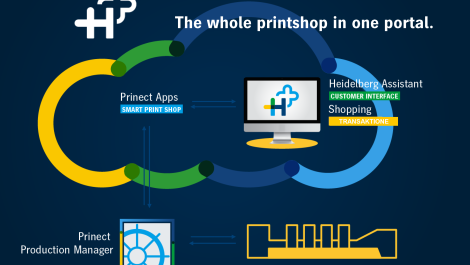Process control tools can help printers to increase their profits, writes Laurel Brunner, by ensuring they hit colour and quality standards.
ISO TC130, the ISO technical committee responsible for graphics technology standards, develops process control tools and other standards. However, for many printers, not least digital printers, applying the standards is challenging, as is knowing how to exploit them to improve margins. And yet that is what standards are all about. To get the most out of using standards to increase your profits, you need to have some process control tools of your own already in place.
Process control can be interpreted in various ways, but in the graphic arts industry it falls into either a data model or a mechanical one. For digital printers, understanding the former is the only way a company will be able to tighten up their processes and improve profits. Audit your workflow and identify the bottlenecks, which could be anywhere in your data supply chain. In file delivery, make sure that files get delivered to you efficiently, whether it is through a dedicated online portal, an FTP server or email. Make sure they are well-formed PDFs using a suitable reference standard. Use the reporting tools available in preflight checking software such as Enfocus Pitstop or Callas pdfToolbox, to analyse error rates and see where your process falls short.
Consider how you manage colour in production. You should be implementing ICC colour management, but how well are you able to manage profiles? What procedures do you have in place for profiling new substrates or making sure that you achieve common colour appearance across printing devices? These are the basics of colour management but all too often we still see expensive mistakes. Do not let ignorance undermine your company’s profits.
Here are some basic ideas to start with, before you head for iso.org, credit card in hand. When it comes to colour, choose an RBG colour space that suits your business model. If you produce a lot of photorealistic colour work, make sure it is Adobe RGB rather than sRGB, which is a smaller colour space, so therefore describes fewer colours. Adobe RGB also provides a better match to the colour gamut of offset litho on coated paper. This is an easy process control tool for printers producing the same job files on digital as well as analogue presses. Also many ICC profiles are based on the Fogra 39 colour data set. Images saved in Adobe RGB will have colour values which will more closely match the relevant CMY colours in Fogra 39 than is the case with sRGB.
Make sure you use a decent measuring device for colour control and that you have it regularly serviced, because these tools can drift and go out of calibration. There are several providers of spectrophotometers. Barbieri, Techkon and X-Rite are perhaps the best known names in measuring devices, and Konica Minolta also has a division specialised in colour measurement tools. These companies offer products for virtually any measurement application. For instance, Techkon’s TechKon Dens is an entry level tool that is a combined colour reflection and film transmission densitometer, plus a magnifying glass for checking printed results. You would however be far better off with a spectrophotometer to measure colours as well.
Perhaps the most important process control tool you have is your people, especially those responsible for quality management. Make sure they understand your quality expectations and how to control production processes so that no disappointments are printed. Agree what Delta E values you want to aim for, and how much deviation from this target you will tolerate.
Process automation is not just the preserve of ISO standards. One of the most mature tools available is not an ISO standard, but it is a de facto standard. The Job Definition Format (JDF) was introduced many years ago to link disparate systems in an effort to bridge different parts of a digital workflow. JDF has had most success in linking MIS technologies to prepress production, however it has to be said that it has not lived up to its promise. It is based on XML and requires bespoke code to connect different systems. Printing companies with sufficient IT resources do their own XML coding to provide the connections, as do workflow systems companies. The likes of Agfa, Fujifilm and Kodak have the necessary expertise to link software across databases, using either JDF or XML.
There are plenty of standards and tools, but process control starts with rigorous data control from the moment a file arrives to the delivery of the job. Control your processes and you control your profits.





